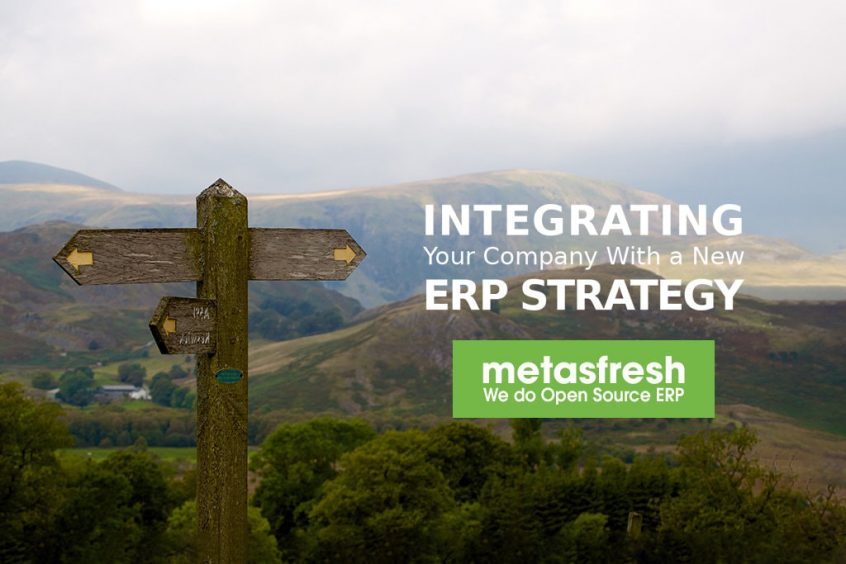Share this Post
Ever since the swinging 60s, when modern factory production and computing was born, Enterprise Resource Planning (ERP) systems have been helping companies streamline their business processes and manage their operations more efficiently. In those early days, the primary need was to balance production and customer demand, and Materials Requirement Planning (MRP) software emerged to help large industrialists manage their inventories and raw material requirements for manufacturing, purchasing, and delivery.

ERP systems manage core operational business processes. —Source: bain.com
Today, the capabilities of ERP solutions have expanded far beyond the realms of inventory and supply chain management. Modern systems are now deployed to optimise and automate a wide range of business functions and connect all of an organization’s departments — including finance, accounting, human resources, and project management — together via a centralised data hub. They are extremely flexible, often cloud-based, can be accessed using advanced web, desktop, and mobile apps, and can support functions as diverse as sales and marketing, customer relationship management (CRM), and business intelligence.
Postmodern ERP
In the past, ERP solutions were built as fully-comprehensive tools that offered business users a complete range of services in one big central program. However, the practice of using such single, one-stop-shop, monolithic ERP platforms is now being abandoned by some companies in favour of adopting an assortment of standalone programs. For example, an organization might prefer to use a more robust and purpose-built CRM system such as Salesforce rather than the middle-of-the-road CRM application bundled in with their ERP system. Similarly, they may wish to use a third-party solution like Workday for human resources, and QuickBooks for accounting.

Modern architectures are likely to have a smaller ERP core supported by best-of-breed, third-party SaaS solutions. —Source: bain.com
This is known as a postmodern ERP strategy, where organisations can customise and optimise their ERP systems using best-of-breed applications from multiple vendors, while ensuring they adequately integrate with each other where necessary.
Benefits of Postmodern ERP Integration
Greater Flexibility
Traditional, monolithic ERP systems are, by their very nature, one-size-fits-all solutions. What you see is what you get with them, and organisations are limited to the functionality provided as part of pre-packaged solution. True, many ERPs on the market today offer built-in integration capabilities — but these are usually limited to only the most popular products, which may or may not serve the organisation’s precise needs.
When organisations take the postmodern approach to building an ERP system, on the other hand, they have the freedom to integrate however and whatever they wish, and can select the applications that are best suited to each particular operation or process.
Greater Customisation Options
With greater flexibility comes greater customisation options and greater control. Traditional, monolithic ERP systems that try to be all things to all businesses nearly always come with built-in components that many organisations won’t ever need — and these unused assets waste valuable system resources and clog up workflows.
With a fully-integrated system, businesses can customize and select only the specific tools they want to have in their solution. In this way, they can build a leaner, highly personalised system made up of only the components the business actually needs, providing the ultimate in workflow efficiency.
Competitive Advantage
The ability to hand-select applications based on precise business requirements — with no superfluous functionality draining resources or disrupting workflows — allows organisations to fine-tune their ERP system for maximum productivity. This, in turn, enables employees to start focussing on and implementing growth strategies, rather than wasting time and resources finding workarounds for poor processes imposed by the inflexibility of legacy systems.
Final Thoughts
Crucially, postmodern ERP strategies rely on the integration capabilities of individual applications provided by the selected vendors. Without successful integration, all you will have is a series of separate applications with little communication between them, rather than a fully-integrated suite. To put it another way, you won’t really have an ERP system at all.
So, you will need to assess your current ERP system’s ability to integrate. Older systems may be limited in their ability to integrate with recently-developed best-of-breed applications, and even new systems may be tied-in to vendor-specific integrations. Talk to your vendor and find out precisely which integrations are practicable and ask for their support when designing and implementing your integration strategy.
Finally, you can talk to us here at metasfresh. Since 2006, we have been developing our metasfresh ERP software non-stop with open source components and under the open source licenses GPLv2 and GPLv3. Our mission is to enable each and every company to access a powerful ERP system with the aim of fuelling corporate growth. Get in touch today for more information and insights.
Share this Post



